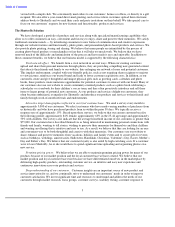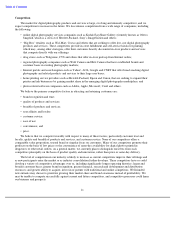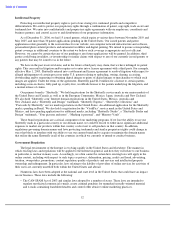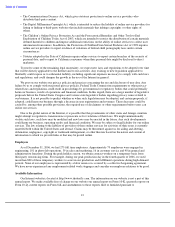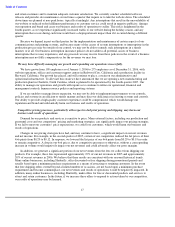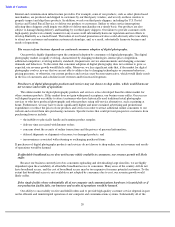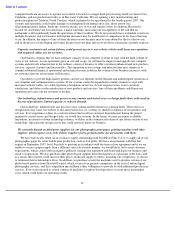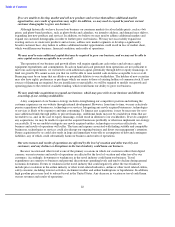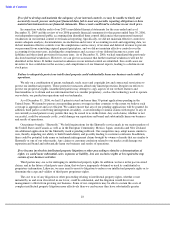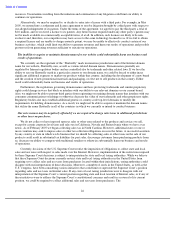Shutterfly 2007 Annual Report Download - page 20
Download and view the complete annual report
Please find page 20 of the 2007 Shutterfly annual report below. You can navigate through the pages in the report by either clicking on the pages listed below, or by using the keyword search tool below to find specific information within the annual report.
Table of Contents
Our quarterly financial results may fluctuate, which may lead to volatility in our stock price.
Our future revenues and operating results may vary significantly from quarter-to-quarter due to a number of
factors, many of which are outside of our control. Factors that could cause our quarterly operating results to fluctuate
include:
Based on the factors cited above, we believe that quarter-to-quarter comparisons of our operating results are not
a good indication of our future performance. It is possible that in one or more future quarters, our operating results
may be below the expectations of public market analysts and investors. In that event, the trading price of our
common stock may decline.
We have incurred operating losses in the past and may not be able to sustain profitability in the future. Recent
accounting changes may make it more difficult for us to sustain profitability.
We have periodically experienced operating losses since our inception in 1999, and we make investments in our
business that generally result in operating losses in each of the first three quarters of our fiscal year to enable us to
generate net income during the fourth quarter. This net income is necessary for us to achieve profitability on an
annual basis. If we are unable to produce our products and provide our services at commercially reasonable costs, if
revenues decline or if our expenses exceed our expectations, we may not be able to sustain or increase profitability
on a quarterly or annual basis. In addition, as a publicly-traded company, we are subject to the Sarbanes-
Oxley Act of
2002, which will soon require that our internal controls and procedures be compliant with Section 404 of the
Sarbanes-Oxley Act, which we expect to be costly and could impact our results of operations in future periods. In
addition, the Financial Accounting Standards Board now requires us to follow Statement No. 123 (revised 2004),
“Share Based Payment,” or SFAS No. 123R. Under SFAS No. 123R, companies must calculate and record in their
statement of operations the cost of equity instruments, such as stock options or restricted stock, awarded to
employees for services received beginning in the first quarter of the 2006 fiscal year. We expect that we will
15
•
demand for our products and services, including seasonal demand;
•
our pricing and marketing strategies and those of our competitors;
•
our ability to attract visitors to our website and convert those visitors into customers;
• our ability to retain customers and encourage repeat purchases, particularly our high-volume customers from
whom we derive a high proportion of our net revenues;
• our ability to sustain our profit margins, particularly our ability to sell to consumers additional photo-based
products such as photo books, calendars and cards;
•
the costs of customer acquisition;
•
our ability to manage our production and fulfillment operations;
•
the costs to produce our prints and photo
-
based products and merchandise and to provide our services;
•
the costs of expanding or enhancing our technology or website;
• a significant increase in credits, beyond our estimated allowances, for customers who are not satisfied with
our products;
•
declines or disruptions to the travel industry;
•
variations in weather, particularly heavy rain and snow which tend to depress travel and picture taking;
•
the timing of holidays, particularly Easter;
• volatility in our stock price, which may lead to higher stock-based compensation expense under newly
adopted accounting standards;
•
consumer preferences for digital photography services; and
•
improvements to the quality, cost and convenience of desktop printing of digital pictures and products.


